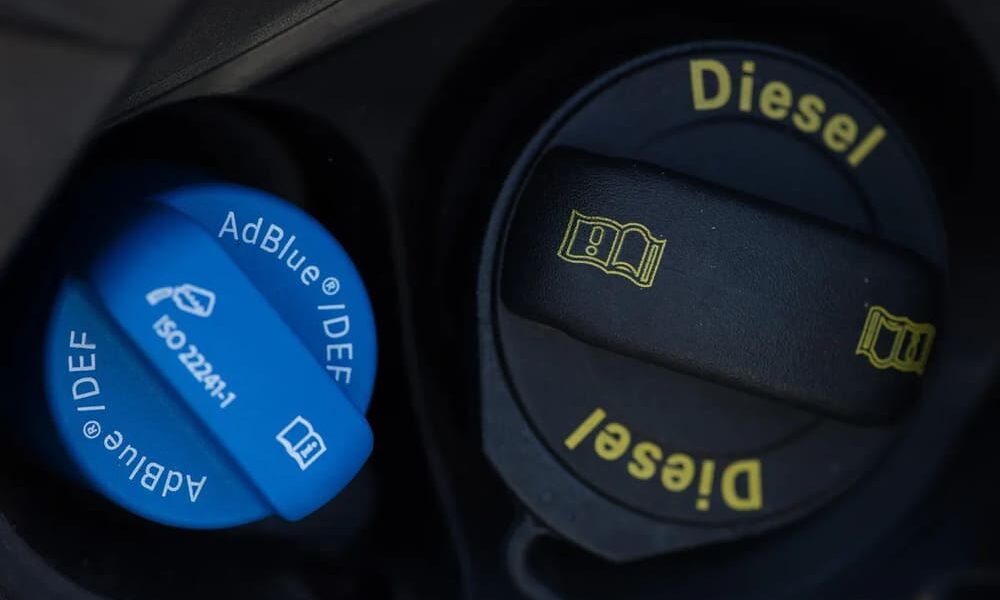
Diesel exhaust fluid is used to help break down the hazardous nitrogen oxide (NOx) concentration in emissions from your diesel exhaust stream and turn it into safe water and nitrogen. It is made up of 32.5 percent urea and 67.5 percent deionized water and is a non-hazardous solution. It is consumed in a system called a selective catalytic reduction (SCR).
Diesel exhaust fluid does not come in contact with the diesel fuel in your truck and is stored in a completely separate tank.
How does diesel exhaust fluid work?
To make sure that the engine reaches full combustion and to prevent exhausting fuel that is not burnt, diesel engines run with a specific air-to-fuel ratio. When there is excess air, the process creates nitrogen oxides. Nitrogen oxides are harmful pollutants. Therefore, the SCR is required to reduce the amount of NOx emissions before it shoots out the exhaust pipe and pollutes the air.
How diesel exhaust fluid DEF works within this system is all about chemistry. The diesel exhaust fluid is injected into the exhaust system. Its urea component vaporizes and creates carbon dioxide and ammonia. Ammonia will “catalytically reduce” the amount of nitrogen oxides, turning it into regular nitrogen and water before being released through the exhaust steam. Both these elements are not harmful to the environment.
Do all diesel engines have a selective catalytic reduction system?
Selective catalytic reduction SCR technology has been available for decades but is still relatively new in diesel trucks. Most diesel truck engines built in 2010 and after will have an SCR catalyst system. Typically, your truck will have a gauge that shows the level of diesel engine fluid, kind of like a regular fuel gauge. Sometimes they have a flashing light to alert you when fluid is low. If you don’t fill up your DEF tank and you run on empty, it could diminish your vehicle speed. Once it’s added, things should go back to normal. If your not sure if your diesel is equipped with this system, ask the diesel repair pros. You want to make sure your truck is compliant with diesel engines emission standards.
Where can you buy diesel exhaust fluid?
Since most diesel vehicles built since 2010 run with SCR, diesel exhaust fluid is available at most retail stores that sell automotive parts and at any gas station. If you’re traveling, a truck stop will have DEF pumps next to the fuel pumps.
What if DEF freezes?
Freezing fluid can be an issue in Edmonton, but with diesel engine fluid you don’t have to worry too much. DEF freezes at about -11 degrees Celsius. If your diesel engine fluid freezes, you will still be able to start up your truck. Once the engine is running, the DEF tank has a built-in heater that will warm up the tank once the engine is running. This stuff thaws rapidly and will be flowing quickly. This is a big reason why you should let your engine warm up a little bit in the wintertime.
An important note about the heater: it is one of the most common points of failure in the system. When the heater fails the DEF tank doesn’t warm up and the fluid doesn’t thaw. When that occurs you will experience a drop in performance of your vehicle, similar to what occurs if you run your DEF tank on empty. The vehicle will seem sluggish and the speed of the vehicle is reduced until it’s repaired.
Tip: Because DEF has water in it, it will expand when it is frozen. To avoid having your lines damaged, keep the battery on for a minute or so each time you shut the vehicle down. This will let the fluid drain back into the DEF tank and out of the line.
Courtesy of revolutionmotors










